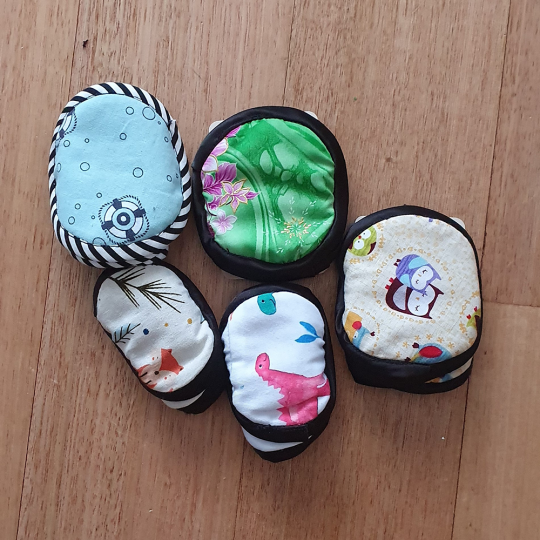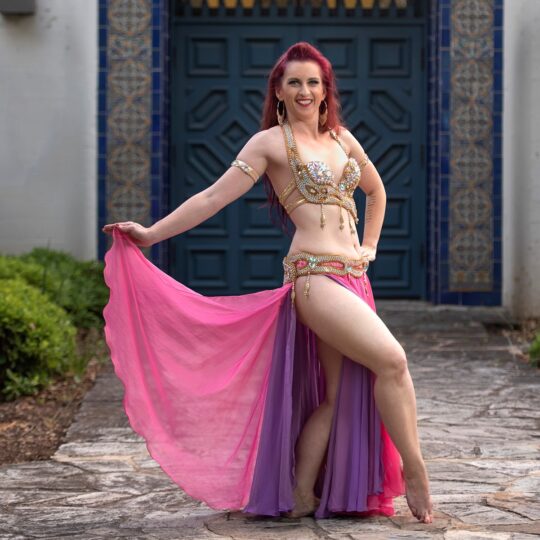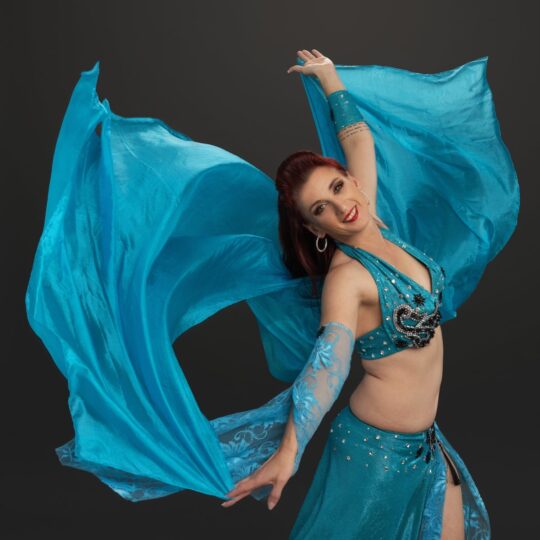Suhaila Salimpour is Director of the Salimpour School of Belly Dance in San Francisco(1). Daughter to Jamila Salimpour (often considered the ’mother of Tribal bellydance’), she began her dance tuition at the age of two, began teaching at the age of fourteen and has been a professional performer and master teacher ever since.
She spent ten years in the Middle East as a featured performer in top nightclubs and five-star hotels. This, coupled with her extensive dance training in ballet, jazz and tap, inspired her to create an educational program for bellydancers that values both technique and cultural knowledge. Her five-Ievel certification program takes students with little or no formal dance experience through to professional dancers and instructors.
Suhaila visited Wellington in February (2017), hosted by INDEJA and Snakecharmer Bellydance, to present workshops for the Suhaila Level 1 certification and a Jamila taster workshop with choreography. In 2018, she will visit Australia for the first time to present four days of workshops which will introduce dancers to the Suhaila and Jamila formats!
Amanda Pooley-Brand(2) spoke to Suhaila in April 2017.
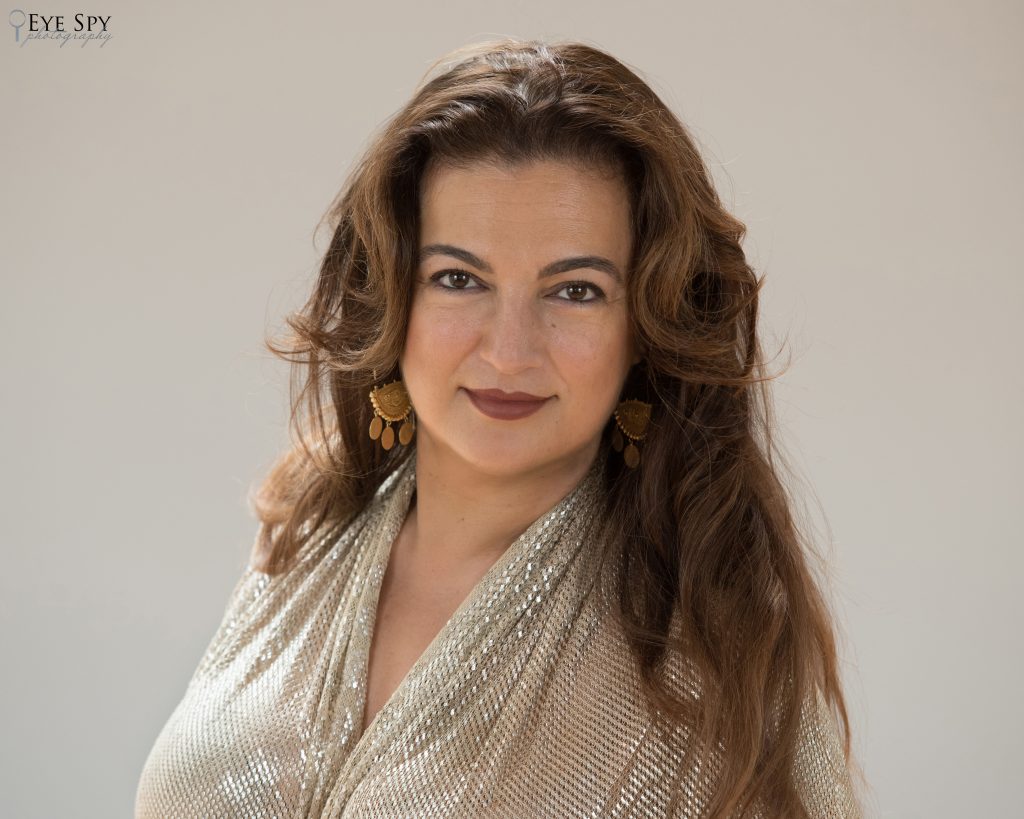
Amanda: That weekend in New Zealand has reignited my passion for dance; what drives your passion for this dance format?
Suhaila: That’s wonderful. Not many have asked me what drives my passion for this dance form. The core answer has always been and will always be the music; that’s my seed, the roots of it all and that will never change. Arabic music feeds my soul like nothing else; it is like no other music. It’s what I grew up on, and it’s the movement, the dance form that I’ve chosen to express it with. So, Arabic music is what drives me to continue in this art form. I like the classics and the Golden Age and era of music from the 1920s to the 1970s.
What feeds my soul, in terms of creating, is watching the development of my students. It’s so satisfying to watch a student come in, not even aware of her body, and see how this dance form and the community of women completely evolves the person; they become so empowered by it all.
Amanda: What is your biggest highlight so far?
Suhaila: I’ll answer that on many levels; as an artist, a mother and a daughter. As a daughter, my biggest achievement is being able to take care of my mother, who is aging. The fact that I have her live with me and take care of her makes me feel very rich. I’m able to enjoy every day with her. It’s a blessing as a daughter to do this.
As a mother, my greatest accomplishment is producing a well balanced, educated, creative, funny, young woman into this world, which I did by myself. Isabella is nineteen; she’s in college and she’s a great young woman.
I’ve had great moments on the stage and my greatest is choreographing Enta Omri(3) but when the curtain comes down it’s over. Artistically, my greatest accomplishment is creating the Salimpour School of Belly Dance and the certification program(4). Even when I’m not on this planet anymore, this format will live on. It’s way bigger than me.
I used Alvin Ailey’s Dance School(5) as a role model for what I wanted to do; we don’t have anything like it in this dance form and it needed structure. This is something I’ve given back to my art. I feel a sense of accomplishment in that. it’s hard; it takes years to get to Level Three and people aren’t used to working so hard in this dance form, but I am putting out some of the best dancers in the world right now and that makes me very satisfied.
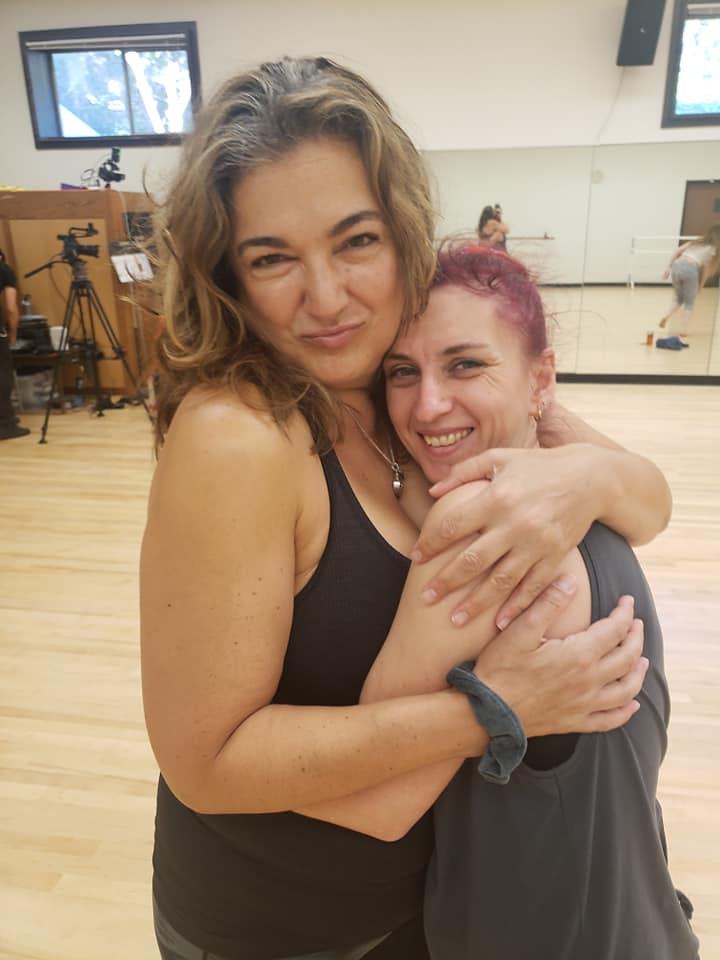
Amanda: Was there ever a time that you didn’t want to follow in Jamila’s footsteps?
Suhaila: Never; it’s not like I even thought about it. It is my destiny. Even as a child, I always knew what I was put here to do. It doesn’t make the path, the work, the journey any easier, it just makes for less internal turmoil.
Amanda: Do you see that in Isabella as well?
Suhaila: Isabella grew up with the structure of the school I built, whereas my mother’s school didn’t have the certification program, social media and database of students which I deal with to run and direct a school. Isabella is studying musical theatre and she wants to be on Broadway. She takes it for granted that one day she will work for me, and she is teaching workshops, but she also has this whole other path that she needs to follow in the meantime. For Isabella, it’s a part of her life and I love that she’s more well balanced than I ever was.
Amanda: Performing, teaching and running a dance school is a lot of work. Add family life, friends, and world travel; how do you keep it all balanced?
Suhaila: It’s difficult to juggle, but I don’t do it all myself. I employ a team of incredible women that help me keep the vision going. Amanda, my office manager, is great, and I do curriculum development with Vonda. I create with my Level Five dancers. They’re also out there working with their students on Level 1; we regroup and develop the program. My personal assistant helps with my life, college applications for Isabella and birthdays! Two women help caretake my mother. I don’t think I could do what I do without that team. The other thing is that my studio is only three minutes from my house.
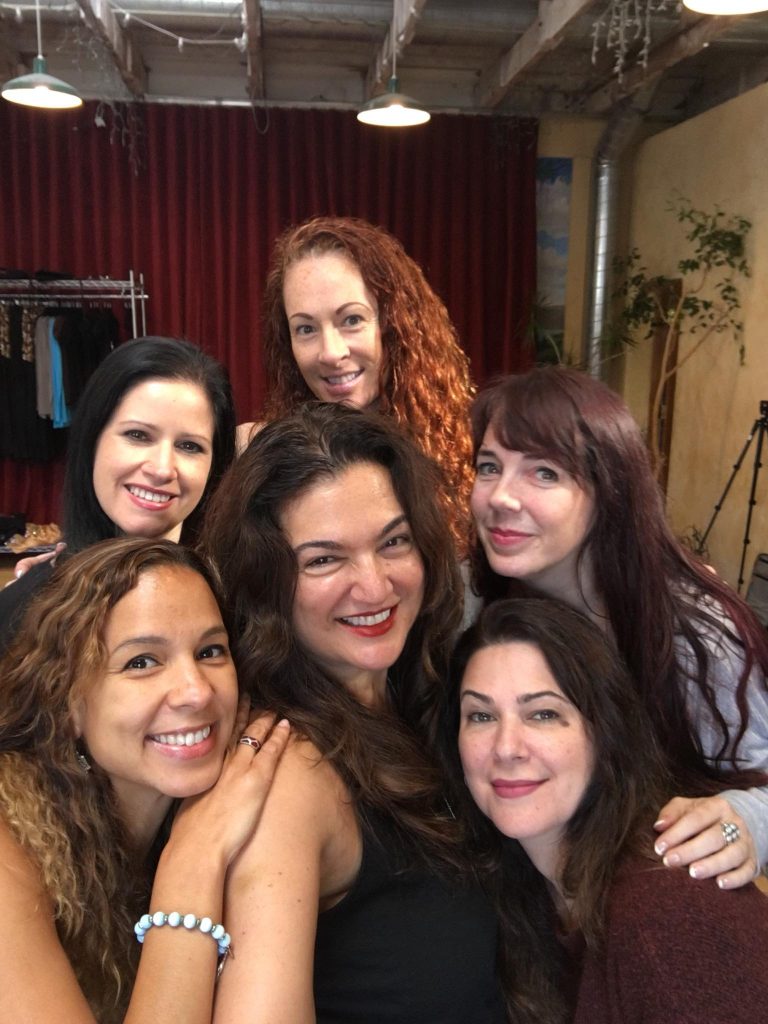
Amanda: At the NZ workshops, you said that now is the prime time to learn as everything is still evolving. How much more room do you think there is to grow?
Suhaila: If I stopped teaching tomorrow and said, ”OK, you guys take over”, the school would probably be fine as it is for the next fifty years. But, that’s not how I work as a creative force. The program is fluid. I watch my students go through the program; I address the challenges and adjust the program to help them through the tough periods. It’s always evolving and developing because I’m evolving, growing and developing.
One of the things that has been devastating for me to watch my students go through was the death of the Arabic nightclub in the US. I was trying to teach traditions in this dance form while there was no way to watch, experience, learn and practice them. I had to create environments and opportunities to evolve that side of the artform.
Amanda: How do you approach your personal dance practice? What tips do you have for the rest of us?
Suhaila: l have a personal practice which I do very early in the morning.
I wake at six. There are some months when I’m maintaining; some months I’m exploring something new that I want to learn and grow from, to bring energy into my program. It’s always evolving.
When I’m choreographing, I lock down times in my studio and choreograph. When I choreographed Enta Omri, I had a very short time to choreograph eighteen pieces in four months; that kicked my ass a little bit.
Amanda: How do you approach the creative process?
Suhaila: I go into another head space. I’m dyslexic, and when I’m heavily choreographing, my dyslexia gets really bad. I lose sight of what’s front and back, up or down. I’m almost in a floating state; I’m not grounded. My head is so in the music and the storyline of the music and the emotional part of the music that it’s hard to come out of it.
I’ve choreographed almost four hundred pieces; I would say about seventy of them are decent, but I had to do a lot of crap to get to the substantial ones.
I teach how I create in Levels Three and Four. I’ve broken down the process of how I create. I know it’s very specific to the way I approach it, which is why I teach it in my program. I teach a very specific staging and emotional staging, how to emote and work through certain patterns not only can I break down a movement, I can break down a creative process.
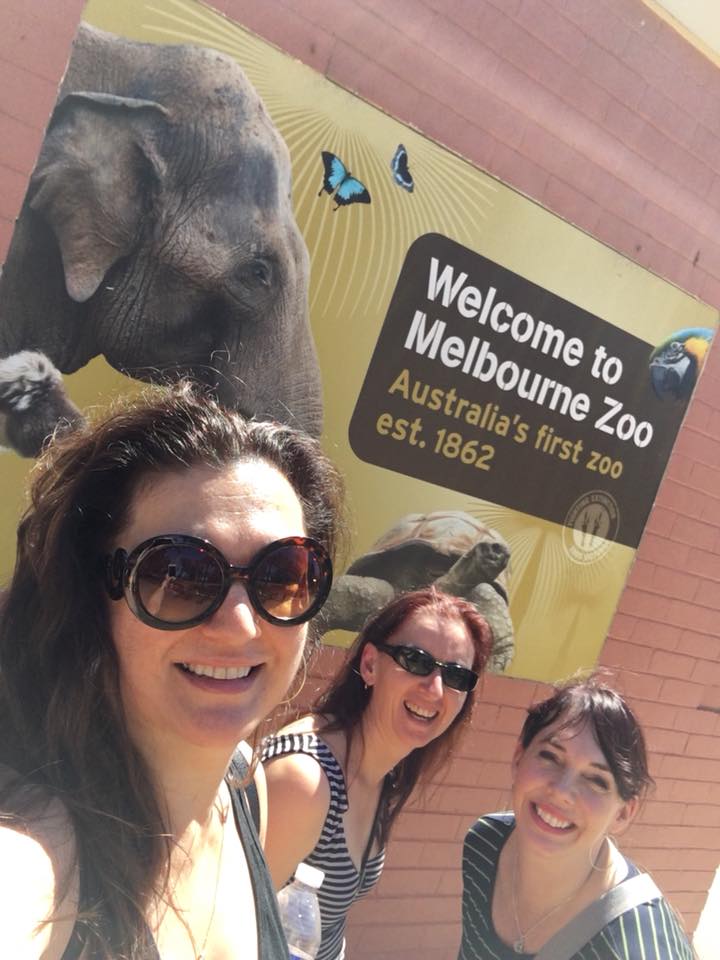
Amanda: How do you go about preparing for a live performance?
Suhaila: I wake up early, go to the gym and get my cardio up, because my performances are ninety minutes, sometimes longer, without a break.
I’m also in ballet four days a week; I do what I tell my students to do, which is to put on my sets and improvise. My solos are improvised. If you watch the “SuhaiIa Solo“(6), 90% Is improvised. For me, improvising on a high level to live Arabic music, both physically and structurally, is the ultimate goal.
Amanda: What is the key for building a compelling performance?
Suhaila: Oh, that’s easy. To do an honest show, you have to be vulnerable.
When you are on stage, there’s nothing more you can do to make your technique better; where you’re at is where you are at. Your costume is your costume. Your make up is your make up. There’s nothing more you Lan do, so when you step out on that stage, you have to drop everything in your head, open up your heart, be vulnerable and become one with the music. Without vulnerability, you are not able to experience the true benefits of being a live artist or performer.
“Dances for the Sultan“(7) was an iconic video; it inspired a generation of dancers who now call what they do Tribal Fusion. I look at that video and see a twenty-year-old girl. It’s not what I would do now and it’s not at all representative of me. I’m a way better dancer now, but that is who I was then.
Amanda: What’s your best tool for a healthy dance body emotionally and physically?
Suhaila: My best dance tip physically is to stay in home position. Emotionally, it’s to follow your heart. As dancers, we have such great instincts but we second guess and let the demons take over.

Amanda: If you could change just one thing that bellydancers of any genre do, what is it and why?
Suhaila: Train; belly dancers don’t train long or hard enough. There’s a problem with this dance form if after two years someone is a professional, teaching and on stage. It should take at least ten years!
The other thing I’d like to change is that a lot of performers are teaching; if you look in other dance formats, most of the teachers aren’t performers. Great coaches aren’t performers. Being a performer and being a teacher are two different art forms; most of the time, if you’re good at one, you’re not good at the other.
Amanda: Where do you see the future of bellydance?
Suhaila: I’d like to see more of an academic environment; if we could get a degree in Middle Eastern dance, that would be my dream. I modelled the Salimpour School after Alvin Ailey’s because his school gives a qualification.
Amanda: What’s next for you and for the school?
Suhaila: For the School, it is getting my Level Five dancers out in the community as representatives of the school. I want people to feel that they can take a Level One workshop, not necessarily with me. My goal is that everyone all over the world, no matter what stylisation, will at least go through Suhaila and Jamila Level One.
For me as an artist, I have a one-woman show that is developed and written, but is pushed aside if I have other projects. On a personal level, what’s next is to also take more vacations, because I don’t take vacations.
References:
(1) www.salimpourschool.com
(2) https://apbdance.com.au
(3) www.salimpourschool.com/program/enta-omri-program
(4) www.salimpourschool.com/certification/about-certification
(5) www.alvinailey.org
(6) www.salimpourschool.com/video/ & https://vimeo.com/143773140
(7) www.salimpourschool.com/video/ & https://vimeo.com/142917276
This article was originally published in Belly Dance Oasis magazine issue 61, January 2018 and permission granted for it’s re-publishing on APB Dance.


